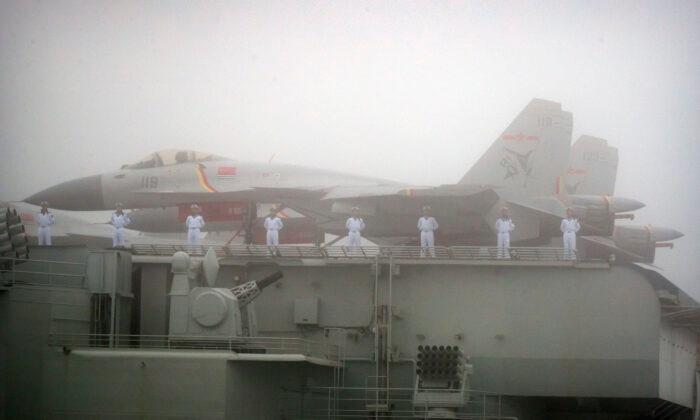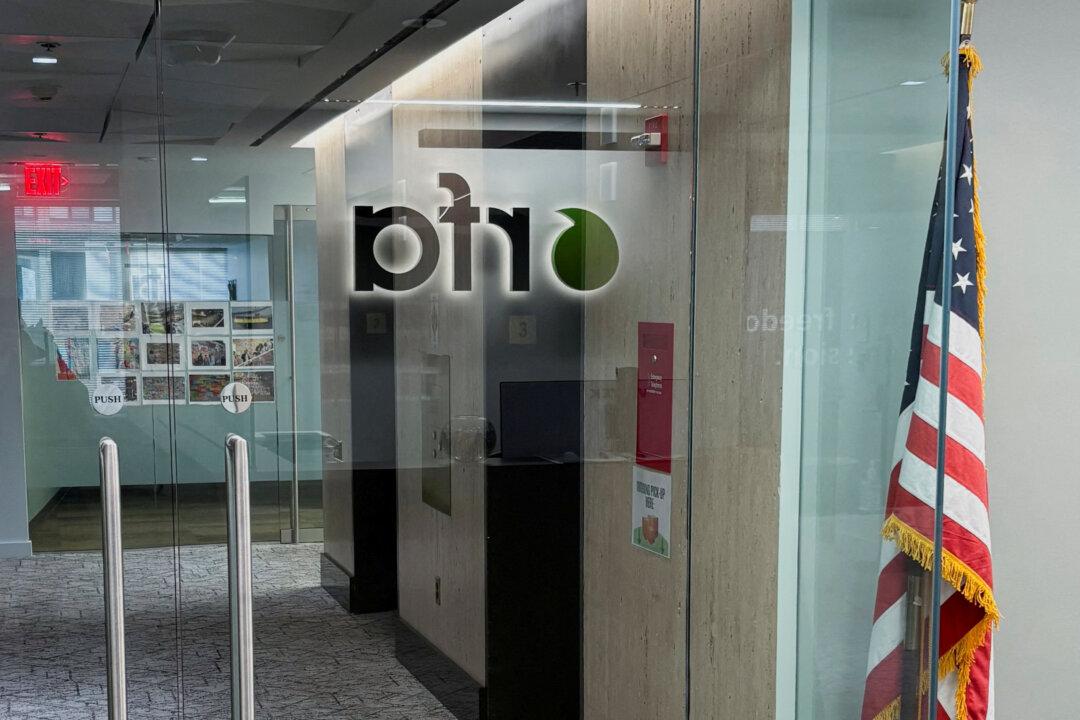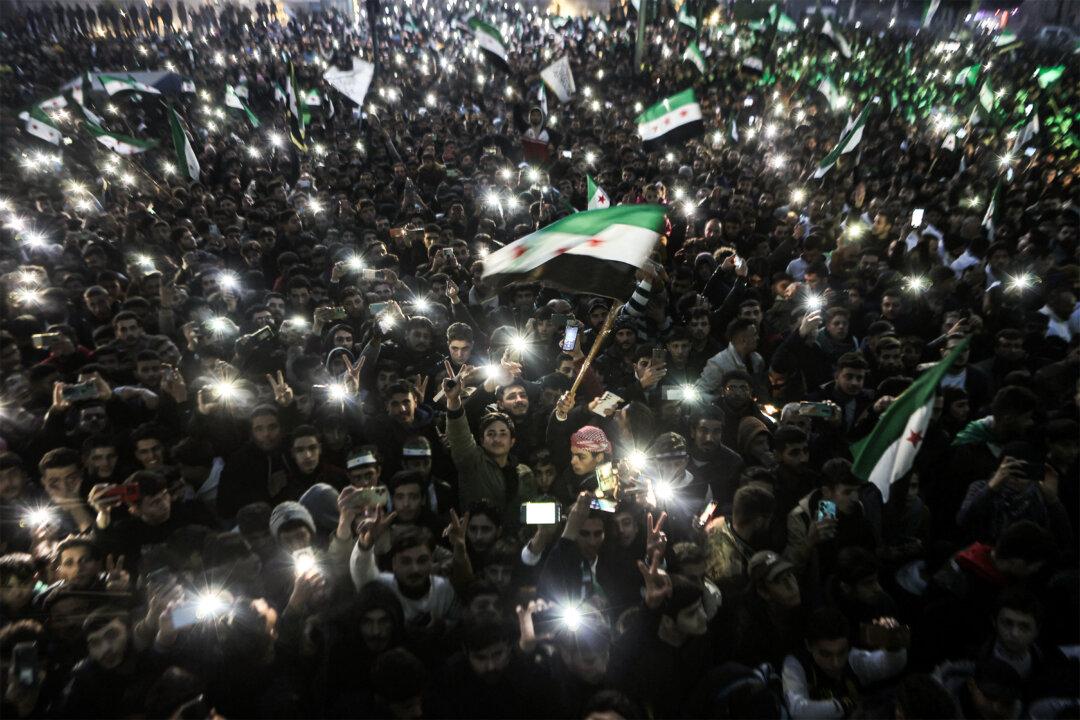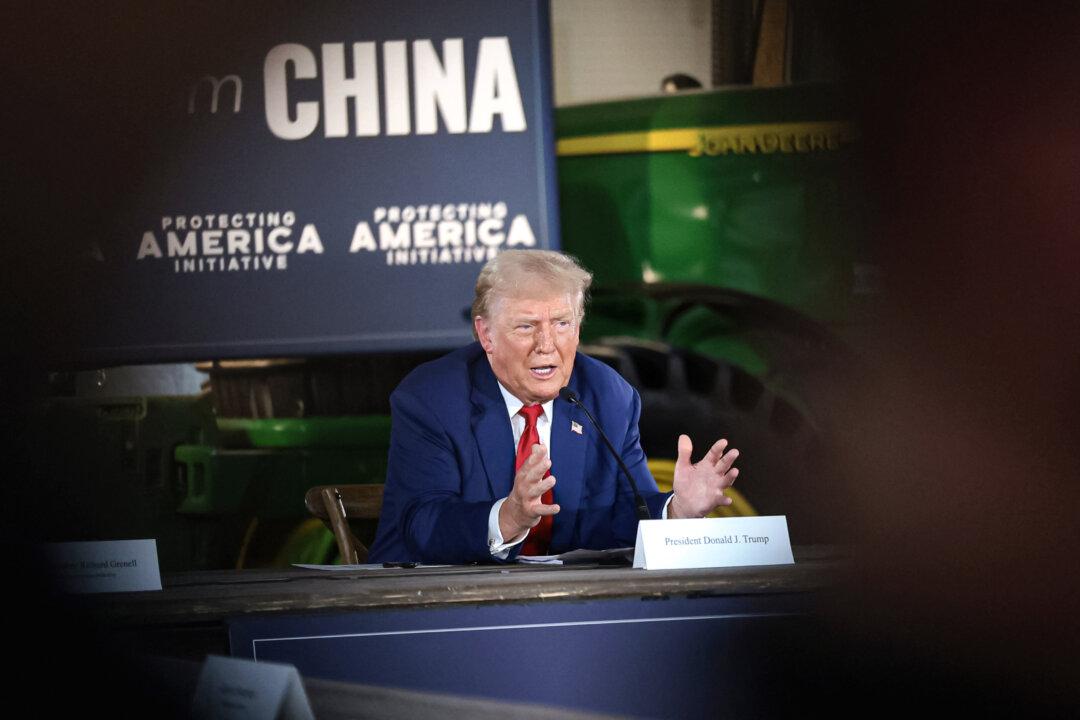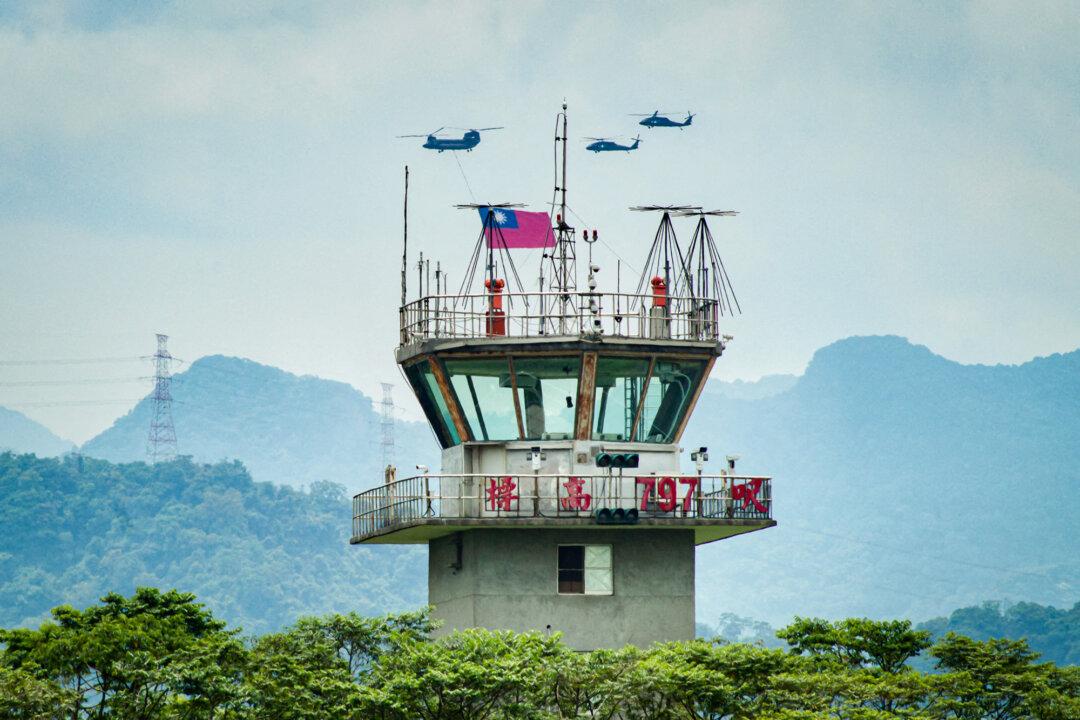Recently, many conflict hotspots are suddenly heating up around the world. When it comes to international conflict hotspots, there have been essentially no big changes from the end of the last century to the present day.
The Israeli-Palestinian conflict in the Middle East has now become the Israeli-Iranian conflict; volatility within Eastern Europe has now manifested as the conflict between Russia and Ukraine; the Balkan Peninsula is the only region that has gotten a little quieter.
Today, the remaining primary hotspots of international conflict are all related to China, namely the Korean Peninsula, the Diaoyu Islands, the Taiwan Strait, the South China Sea, and China and India, and India’s tension with Pakistan.
In regards to the CCP, the most important geopolitical conflict happening today is its ramped-up militarization against Taiwan.
Beginning in early April, CCP military aircraft entered the Taiwan Air Defense Identification Zone every day for a ten-day consecutive for a total of 74 incursions into the buffer zone.
In particular, on Monday, April 12th, Taiwan’s Ministry of National Defense announced that a record-breaking 25 CCP military warplanes entered Taiwan’s Air Defense Identification Zone on that single day alone. These warplanes consisted of two Y-8 anti-submarine planes, one Air Police-500 surveillance aircraft, four J-10 fighter jets, fourteen J-16 fighter jets, and four H-6K strategic bomber planes. The four models of H-6K bombers flown have nuclear weapon capabilities.
According to the map provided by Taiwan’s Ministry of National Defense, all Chinese military aircraft flew near the Pratas Islands and did not cross the middle of the Taiwan Strait.
Since April, the CCP has deployed similar types of military aircraft, and from the types of aircraft deployed, we can infer the CCP’s intentions.
The Air Police-500 surveillance aircraft is a must for modern long-range air operations.
The J-10 fighter jet is a key military aircraft for air combat; its functions and design are similar to the American F-16. The J-16 was developed from the J-11B series and it is claimed to be a 4.5-generation multi-purpose two-seat fighter. The J-11 is the Chinese version of the Russian Su-30 two-seat fighter. The combat function of this aircraft is similar to that of the American twin-engine F-15. Its defining feature is its long-range and powerful ground and sea strike capabilities.
The H-6K is the main long-range bomber deployed by the Chinese Communist Air Force. In addition to being equipped with advanced electronic systems, it also carries a variety of air-to-ship missiles.
The Y-8 anti-submarine aircraft, as the name suggests, functions to combat submarines.
Since last year, these military aircraft have frequently entered Taiwan’s air defense zone. They are mainly geared towards sea combat.
The operational enemy was not the land target of Taiwan, but the U.S. aircraft carrier fleet patrolling in the South China Sea.
This is likely the key to the CCP’s war against Taiwan.
The CCP has been planning a military attack on Taiwan for many years, and its combat strategy against Taiwan has been roughly finalized. But its biggest impediment is handling the U.S. protection of Taiwan. The CCP has formulated a variety of “anti-access” strategies, mainly to prevent the threat of U.S. aircraft carrier battle groups.
In the future, the Air Force will determine the outcome of the war. The CCP’s biggest advantage over the United States in air combat across the Taiwan Strait is its distance. The U.S. aircraft carrier is the single biggest obstacle in their quest to take over Taiwan.
The CCP Lacks a Military Command With Combat Experience
After the CCP established its power in China, most of the major wars were commanded by generals with a lot of combat experience. Even in the 1979 war against Vietnam, a large number of commanding generals were experienced soldiers who had participated in preceding wars. By now, these generals are all gone.The outside world has no way to gauge the quality of this new generation of CCP generals. However, one thing is certain: many of the generals in the CCP army are not generals on the basis of merit.
After the CCP established its power, the CCP’s Air Force combat performance was slightly better than that of its Navy. The Chinese Communist Air Force participated in operations in the Korean War in the 1950s and directly fought against the U.S. Air Force. Then, in the confrontation with the Chinese Nationalist Government across the Taiwan Strait, the two sides also carried out many air battles in the 1950s, and from the late 1960s to the early 1970s. During the Vietnam War, there was also conflict between Chinese military aircraft and U.S. aircraft.
The CCP Air Force’s record over the Northeast and North Korea was obtained with the MiG-15 against the B-26 and the older American F-80. There is no record of the CCP Air Force shooting down the American F-86 Saber. In other words, the CCP air force mainly concentrated on attacking slower bombers.
In the late 1950s, the CCP air force flew fleets of Soviet Russia’s MiG-17 in combat against the Chinese Nationalists fighting from Taiwan. At the time, Taiwan fought back with the American F-86 fighter plane.
Even then, the CCP air force lost the majority of its battles against Taiwan. As a result, the CCP air force shrank inland and did not dare to fight over the open sea.
They did not fly over the ocean until the 1980s.
What I want to emphasize is that the Chinese Communist Air Force has always existed as a defensive force, rather than an offensive force used for attack.
After 1949, most of the old Republic of China’s navy withdrew to Taiwan, fleeing the Communist regime in China. Although the old warships it received from America were dated, they still fared much better than the navy that the CCP had hurriedly established in the 1950s. The CCP’s navy had a small tonnage of firepower. There were few warships over 1,000 tons, mostly consisting of gunboats and torpedo ships. The CCP’s many naval battles against Taiwan were all sea strikes, which consisted of hiding warships in coastal islands, then suddenly launching surprise attacks, approaching enemy ships at fast speeds, and firing torpedoes before quickly fleeing.
Technology Is Only One Factor
In 1974, the Chinese Navy and South Vietnam fought once in the Paracel Islands in the South China Sea and won. It is now known as the Battle of the Paracel Islands, South Vietnam’s final attempt to eliminate Chinese military presence in the area.At that time, the United States had already withdrawn its troops from Vietnam. The Americans sold several destroyers from World War II to South Vietnam and provided training. At the time of the Battle of the Paracel Islands, South Vietnam had only just received the U.S. ships. Fighting power cannot be formed only with high-quality weapons and determination. Experience is vital.
In that naval battle, the CCP had four torpedo boats and minesweepers against the three destroyers of the South Vietnamese Navy. The South Vietnamese side had the advantage in firepower and tonnage.
I once spoke to a Vietnamese general who had served in the South Vietnamese Ministry of Defense, and later settled in the United States. What I was curious about was why the United States did not take any action during the Paracel War against China. It still had an intact military alliance with South Vietnam. The United States was obligated to provide assistance.
The general said that after the Paracel Sea battle began, South Vietnam kept asking the United States for assistance, with no response from beginning to end. According to him, if the Americans had assisted, only two of their fighters could have solved the problem. It would have taken less than ten minutes to arrive from Subic Bay in the Philippines to the naval conflict. Yet, their calls to the United States went unanswered.
South Vietnamese documents recorded that after the United States handed over the South Vietnamese warships, it sent a large number of naval consultants to train South Vietnamese sailors. However, in 1974, these same Americans in Vietnam suddenly received orders not to leave the port with the warships. Therefore, the Paracel Sea naval battle was left up to a group of South Vietnamese rookies sailing American warships against the Chinese navy.
So I believe the United States tacitly agreed to the CCP taking over the Paracel Islands. The United States had determined that South Vietnam would inevitably fall into the hands of North Vietnam. At that time, the relationship between North Vietnam and the Soviet Union was growing closer.
In the eyes of the United States, the Paracel Islands could not fall into the hands of the Soviet Union, because the China Sea is a strategic channel. Foreign policy strategy preferred Vietnam in the hands of China, over Vietnam in the hands of the USSR at the time.
It has never been made public whether the United States and the CCP made a secret agreement on this issue. But I do know that after the CCP took the Paracel Islands from South Vietnam, it strangely did not place offensive weapons and equipment on the islands.
Only after 2008 did the CCP begin to place missiles on islands in the South China Sea while expanding airports, among other military preparations. Many countries were surprised by the strong response from the United States government. Perhaps it had to do with the CCP destroying the original tacit understanding with the United States?
Everyone knows that upgrading weapons aids in the outcome of a war. But the outcome is never just a matter of the quality of the weapons. Combat methods and leadership command methods must also be upgraded to ensure victory.
The modern navy and air force of the CCP do possess advanced equipment, but this does not mean that the CCP has advanced combat capabilities. Mao Zedong’s confidence was honed by having a CCP army with more than two decades of brutal war experience. Today’s CCP’s military uses untested military strategies to control new weapons, and it has no combat experience. Beyond its flashy new technology, there are still considerable doubts about its capability in true warfare.
